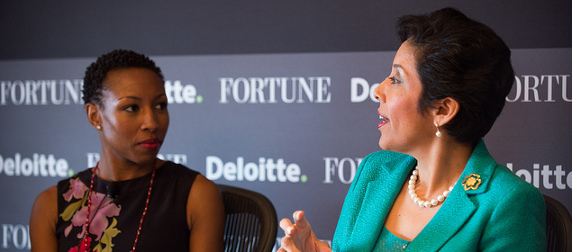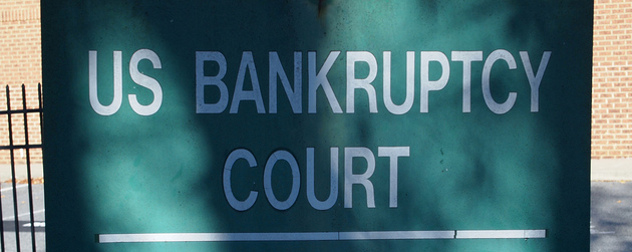I started a heated debate among my co-workers last week by asking what they would do in this scenario:
You are driving on a two-lane stretch of Interstate 95 in rural southern Virginia, on your way from the Northeast to Florida, when you round a curve and see a seemingly endless line of illuminated taillights in front of you. There is just enough time to get to an exit ramp that will put you on a small country highway. You don’t have GPS or a navigation system; at best, you have an old-fashioned paper road atlas somewhere in the car. Will you take the exit ramp, get on the rural road and try to find your way around the traffic jam, or will you stay on the freeway and wait for traffic to clear?
The group split almost 50-50. Most of the women, and a couple of the men, said they would stay on the interstate. The majority of the men said they would take their chances on the country road. My wife said she would take the country road if I was in the car with her, but she would stay in the traffic if she was alone.
Those who chose to stay on the interstate said they were worried about all that could go wrong if they ventured down the unknown road. They might go the wrong way, or get lost, or run out of gas, or fall victim to foul play. The traffic on the interstate might clear right away, making an alternate route the more time-consuming alternative.
Those who would turn onto the unknown byway cited the downside of sitting unproductively in traffic, and the possible upsides of the adventure in saving time, finding a new route, discovering some worthwhile roadside attraction or seeing something more interesting than the standard interstate.
We all had the same limited information, and we all went through the same process of balancing risks and rewards, yet we came to opposite conclusions. The women, in particular, saw greater danger in traveling an unknown road than did the men. It is not hard to understand why.
The question arose during a training session I led for our firm’s managers on entrepreneurship and creativity in business. It is part of a series of classes we have developed at Palisades Hudson to make ourselves better at managing and growing our business. Our managers are already experts at the service parts of their jobs — helping clients deal with topics such as taxes, investments, estate planning and insurance. But being an excellent financial advisor does not necessarily make you an excellent business manager; they are different skill sets. We strive to be as good at running our own enterprise as we are at helping clients run their financial affairs.
When we talk about creativity, most people tend to think of the arts. Painters, sculptors, musicians and authors are seen as creative people. Accountants, investment managers and estate planners, not so much. In fact, the phrase “creative accountant” probably conjures images of someone in a suit and a pair of handcuffs being perp-walked into federal court.
Yet, if accountants, policy makers and Wall Street’s “quants” had been more creative in imagining how the housing markets and various financial instruments could behave, the global financial meltdown a few years ago might not have happened.
Any successful entrepreneur or chief executive will tell you that business is a highly creative exercise. Every day brings unlimited opportunities and challenges, which we must meet with limited resources. A painter can’t cover every square inch of her canvas with every color on her palette. She has to pick and choose which colors to use where, and sometimes which places to leave untouched.
Even crises create opportunities if we are prepared to seize them. Nobody liked it when the stock market lost more than half its value in a little more than a year. Yet, by early 2009, the combination of extremely low values and extremely low interest rates created fantastic financial planning opportunities. We could reduce immediate gift and income taxes, avoid future estate taxes, and make investments that offered exceptionally high potential returns.
In one case, we turned conventional estate planning upside-down. When a wealthy, elderly client died, we chose to pay millions of dollars in immediate estate taxes rather than defer the taxes until the death of her husband, who was also of very advanced years. We took a chance, knowing that if the husband died in 2010 we might have been able to avoid estate taxes completely. But he did not die in 2010. Even with today’s lower estate tax rates — which were unforeseeable at the time — we are better off having paid estate taxes at the lower values that prevailed a few years ago than at today’s much-improved asset prices.
Entrepreneurship and creativity may not be identical twins, but they are at least close cousins. Entrepreneurship is, essentially, opportunism — identifying a need, and an opportunity to satisfy that need, to create something for which someone else is willing, even eager, to pay. Creativity is a process of structured idea generation. It is not an inborn trait; as one expert put it, everyone in kindergarten is given a box of crayons. It is a skill that can be taught, learned and strengthened through practice.
Creativity requires looking at a situation from different angles. Before it introduced the iPod, Apple was a computer company. Portable music players existed, but they were marketed by consumer electronics companies. Music stores existed, but they sold physical discs. Music publishers existed, but they did not make hardware, with the obvious exception of Sony.
To create the iPod, Apple did not merely have to re-imagine the portable music player. It had to re-imagine itself as a business, becoming both a consumer electronics manufacturer and a music retailer. It had to see itself from a different angle. The iPod represented a risk, but that risk could be quantified; it was the cost of developing and marketing the device and the iTunes store. The upside was unquantifiable but far greater than the downside. The results speak for themselves.
If we want to encourage our employees to be creative, we have to help them practice the skills of applied problem-solving, and we have to lower the perceived risks of doing so. If you view taking the off-ramp on I-95 as a creative exercise (and we are still arguing about that), then the way to encourage this creativity is to appreciate the possibilities and to keep the dangers in perspective.
It is not especially useful to have our summer interns tell us that we are running our business completely the wrong way. The intern’s knowledge and skills are too limited for the opinion to be useful. But we don’t want to shut out suggestions from the intern, and we don’t want to reject an intern’s suggestions in a way that makes her reluctant to offer more mature ideas years later, when she is a manager who understands the realities of our work.
Southern Virginia is not full of serial killers. It is full of woods and fields and delicious hams and nice people with a soft, lovely accent. I was in the group that turned toward the exit ramp. That doesn’t mean I am necessarily more creative than the people who stayed on the highway. But it means I saw a chance worth taking, and I was willing to take it.













May 4, 2011 - 12:11 pm
In the case of the elderly woman who died, I assume the estate was not forced to liquidate assets at those low levels in order to pay the taxes, right?
May 4, 2011 - 3:35 pm
Correct.